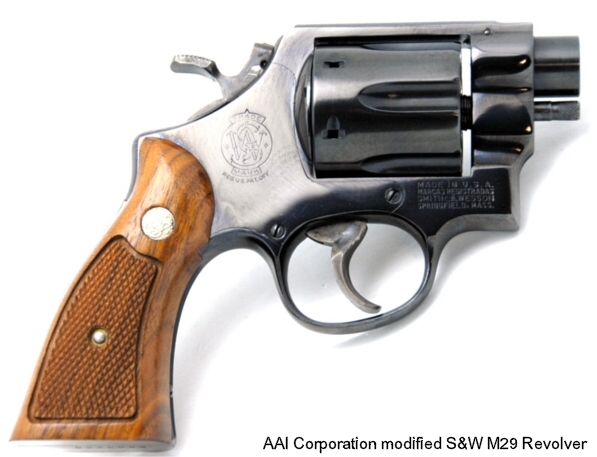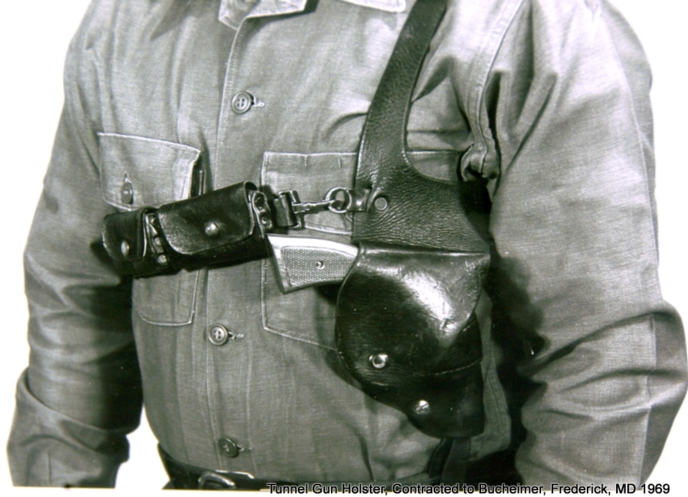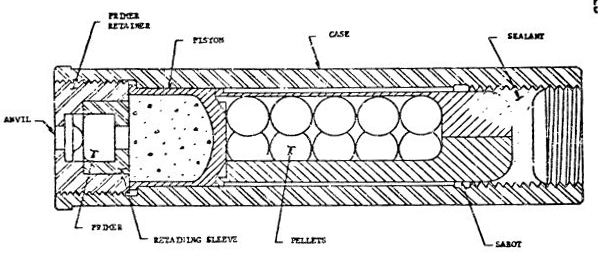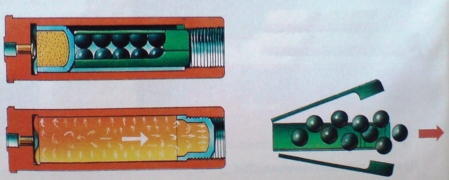
The Quiet Special Purpose Revolver, also known as the ‘tunnel revolver’ was developed by the AAI Corporation at the US Army Land Warfare Laboratory at Aberdeen Proving Ground from 1967 US Army requirements for a silenced, multi-projectile hand weapon for use by ‘tunnel exploration personnel’ (or ‘tunnel rats’), which operated against Vietnamese communist forces in the numerous tunnels dug by NVA and VC personnel.
The QSPR used a modified Smith & Wesson Model 29 .44 Magnum that was rebuilt by AAI to handle the new cartridge which was a special integrally silenced round with a machined steel case with screw-in base and a dull black chrome plating. The primer was secured deeply in the cartridge base by a screw-in bushing and additional anvil, which transferred the blow of the hammer to the primer. The small charge of powder was enclosed at the front and sides by the cup-shaped steel piston, which upon discharge, was securely jammed at the mouth of the case by the internal thread. QSPR ammunition fired fifteen balls – the shot pellets are made of Mallory, which is a trade name for a tungsten heavy alloy -. With the most typical variations combining ± 90% tungsten with copper, nickel or iron, sometimes combined and loaded into a plastic sabot, each weighing about 7.5 grain with a muzzle velocity of about 730 fps or 222 m/s, which resulted in a muzzle energy of approximately 135 ft/lbs.
The practical lethal range was estimated at about 30 feet/10 meters, which was sufficient for the extremely cramped tunnels of that the soldiers found themselves in. The noise of the QSPR round was about 110 dB, or similar to that of traditionally silenced .22LR pistol. The QSPR revolver had no sights, as these were intended for use at point-blank ranges and in very low visibility conditions of tunnels. Testing and improvements were done during 1970 and went on until late 1971, but the withdrawal of US forces in Vietnam lead to this being another casualty and the QSPR program was quietly terminated during 1972.




